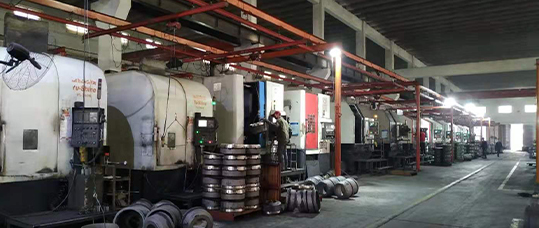
-
 Afrikaans
Afrikaans -
 Albanian
Albanian -
 Amharic
Amharic -
 Arabic
Arabic -
 Armenian
Armenian -
 Azerbaijani
Azerbaijani -
 Basque
Basque -
 Belarusian
Belarusian -
 Bengali
Bengali -
 Bosnian
Bosnian -
 Bulgarian
Bulgarian -
 Catalan
Catalan -
 Cebuano
Cebuano -
 Corsican
Corsican -
 Croatian
Croatian -
 Czech
Czech -
 Danish
Danish -
 Dutch
Dutch -
 ഇംഗ്ലീഷ്
ഇംഗ്ലീഷ് -
 Esperanto
Esperanto -
 Estonian
Estonian -
 Finnish
Finnish -
 French
French -
 Frisian
Frisian -
 Galician
Galician -
 Georgian
Georgian -
 German
German -
 Greek
Greek -
 Gujarati
Gujarati -
 Haitian Creole
Haitian Creole -
 hausa
hausa -
 hawaiian
hawaiian -
 Hebrew
Hebrew -
 Hindi
Hindi -
 Miao
Miao -
 Hungarian
Hungarian -
 Icelandic
Icelandic -
 igbo
igbo -
 Indonesian
Indonesian -
 irish
irish -
 Italian
Italian -
 Japanese
Japanese -
 Javanese
Javanese -
 Kannada
Kannada -
 kazakh
kazakh -
 Khmer
Khmer -
 Rwandese
Rwandese -
 Korean
Korean -
 Kurdish
Kurdish -
 Kyrgyz
Kyrgyz -
 Lao
Lao -
 Latin
Latin -
 Latvian
Latvian -
 Lithuanian
Lithuanian -
 Luxembourgish
Luxembourgish -
 Macedonian
Macedonian -
 Malgashi
Malgashi -
 Malay
Malay -
 Malayalam
Malayalam -
 Maltese
Maltese -
 Maori
Maori -
 Marathi
Marathi -
 Mongolian
Mongolian -
 Myanmar
Myanmar -
 Nepali
Nepali -
 Norwegian
Norwegian -
 Norwegian
Norwegian -
 Occitan
Occitan -
 Pashto
Pashto -
 Persian
Persian -
 Polish
Polish -
 Portuguese
Portuguese -
 Punjabi
Punjabi -
 Romanian
Romanian -
 Russian
Russian -
 Samoan
Samoan -
 Scottish Gaelic
Scottish Gaelic -
 Serbian
Serbian -
 Sesotho
Sesotho -
 Shona
Shona -
 Sindhi
Sindhi -
 Sinhala
Sinhala -
 Slovak
Slovak -
 Slovenian
Slovenian -
 Somali
Somali -
 Spanish
Spanish -
 Sundanese
Sundanese -
 Swahili
Swahili -
 Swedish
Swedish -
 Tagalog
Tagalog -
 Tajik
Tajik -
 Tamil
Tamil -
 Tatar
Tatar -
 Telugu
Telugu -
 Thai
Thai -
 Turkish
Turkish -
 Turkmen
Turkmen -
 Ukrainian
Ukrainian -
 Urdu
Urdu -
 Uighur
Uighur -
 Uzbek
Uzbek -
 Vietnamese
Vietnamese -
 Welsh
Welsh -
 Bantu
Bantu -
 Yiddish
Yiddish -
 Yoruba
Yoruba -
 Zulu
Zulu
Overview of the Components and Functionality of Drum Brake Systems
Understanding Drum Brake System Diagrams
The drum brake system is a vital component of modern automotive braking systems, known for its simplicity and effectiveness
. To better understand how this system works, a drum brake system diagram serves as an invaluable tool. This article will explore the primary components, their functions, and the overall working mechanism of drum brakes, aiming to provide a comprehensive overview of this essential safety feature in vehicles.At the heart of the drum brake system is the drum itself, which is a cylindrical component fixed to the wheel. When the brakes are engaged, the drum rotates along with the wheel. Inside the drum, several key parts work together to create the friction necessary to slow down or stop the vehicle. These parts include brake shoes, a wheel cylinder, and return springs.
The brake shoes are arc-shaped components positioned parallel to the inner surface of the drum. Each shoe is equipped with a friction material that makes contact with the drum when the brakes are applied. The friction material is designed to provide maximum stopping power while also minimizing wear over time. When the driver presses the brake pedal, hydraulic pressure from the brake fluid pushes the wheel cylinder, which in turn forces the brake shoes outward against the drum.
The wheel cylinder plays a crucial role in translating the force from the brake pedal into mechanical movement. It contains pistons that move sideways when activated by hydraulic pressure, pushing the brake shoes into contact with the drum. This force creates friction, converting the vehicle's kinetic energy into heat, which slows down the wheel and ultimately brings the vehicle to a halt.
drum brake system diagram

Another essential component of a drum brake system is the return springs. Once the brake pedal is released, the return springs pull the brake shoes back away from the drum. This action ensures that the brake shoes do not remain in contact with the drum, preventing excessive wear of the friction material and allowing the wheels to rotate freely. This spring action is crucial for the system's overall efficiency and effectiveness.
The drum brake system diagram visually represents the relationship and arrangement of these components. It typically includes labeled parts, showing how they interact with one another. Understanding this diagram is critical for mechanics and automotive engineers as it provides insight into how to diagnose issues, perform maintenance, and execute repairs on drum brake systems.
Drum brakes are commonly found on the rear wheels of many vehicles, while front wheels typically use disc brakes due to their superior cooling and performance characteristics. However, drum brakes remain popular because of their cost-effectiveness and simple design. They are also capable of providing strong braking power, especially in lower-speed situations, making them suitable for many applications.
One advantage of the drum brake system is that it can provide more even braking force due to the self-energizing effect, where the rotation of the drum assists in pressing the brake shoes against the drum. This feature can enhance braking performance but requires careful attention to maintenance to ensure that all components are functioning correctly.
In conclusion, the drum brake system diagram encapsulates the fundamental workings of a critical vehicle safety feature. By understanding its components—drum, brake shoes, wheel cylinder, and return springs—one can appreciate the mechanics behind effective braking. As vehicles evolve, the principles of the drum brake system continue to provide a reliable method for stopping, showcasing engineering ingenuity and the importance of safety in automotive design. Whether one is a budding mechanic or an automotive enthusiast, grasping the intricacies of this system fosters a deeper appreciation for how vehicles operate on the road.
-
Rear Drum Brakes Maintenance Tipsവാർത്തAug.04,2025
-
Key Components Affecting Brake Drum Functionവാർത്തAug.04,2025
-
Important Inspection for Truck Drum Brakeവാർത്തAug.04,2025
-
How to Prepare for Changing Rear Drum Brakesവാർത്തAug.04,2025
-
Essential Tools for Cleaning Drum Brakes Properlyവാർത്തAug.04,2025
-
Brake Drum Function Guideവാർത്തAug.04,2025
-
Safety Features of Red Brake Drumsവാർത്തAug.01,2025
